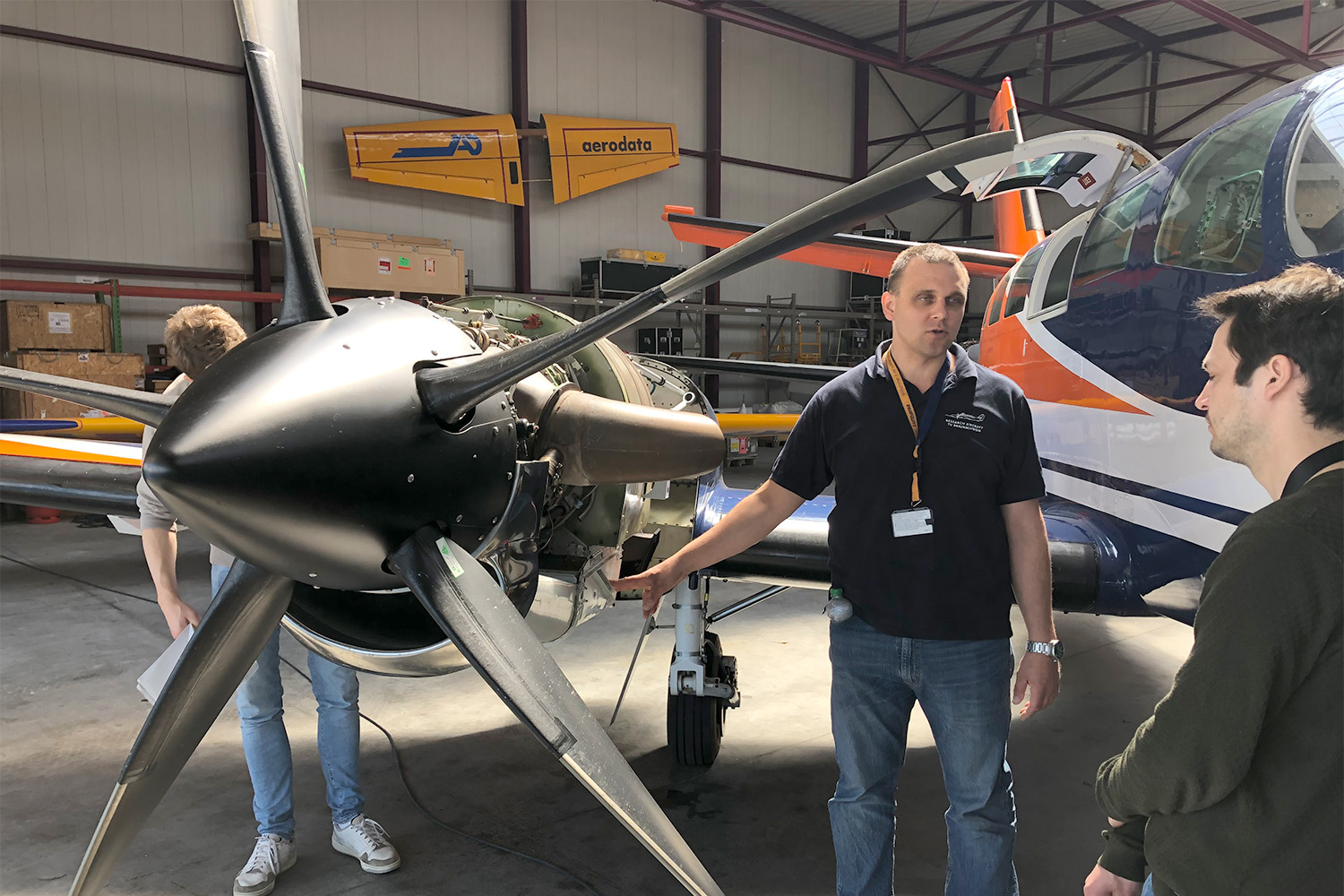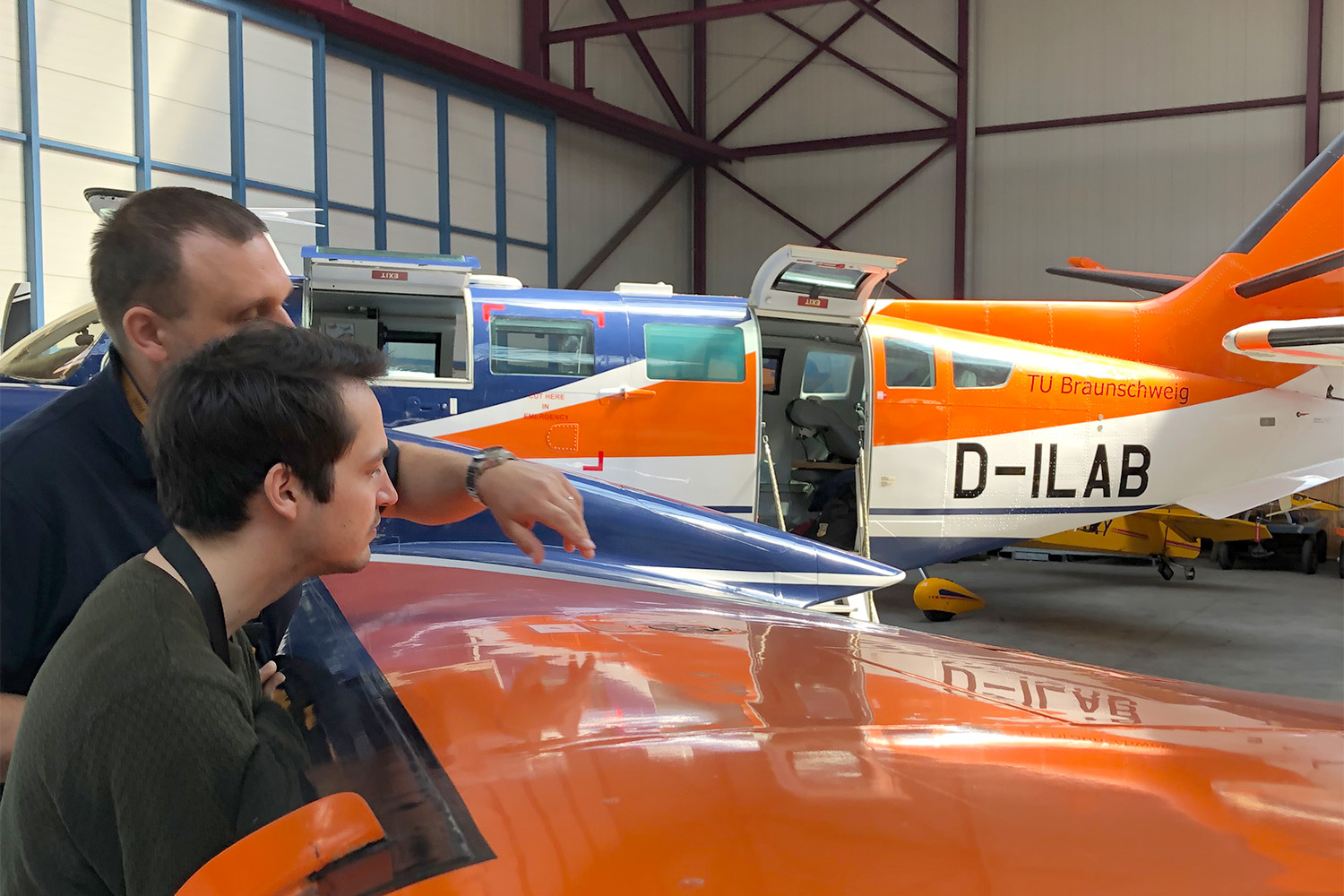Students taken off again Measuring tests in TU research aircraft
In May 2023, the time had come again: students in the Bachelor’s degree programme in Mechanical Engineering and the Master’s degree programme in Aerospace Engineering were once again able to learn in a very practical way: from Braunschweig Airport, they undertook measurement flights with two experienced pilots from the Institute of Flight Guidance. Through these flight tests, TU Braunschweig enables students to apply their knowledge and gain insights for a later career field, for example as a flight test engineer or as a development engineer in aircraft construction.
It is undoubtedly a highlight of the studies: once flying with TU’s research aircraft! As part of the competence field laboratory, students from the Bachelor’s degree programme in Mechanical Engineering were able to fly flight manoeuvres with the Cessna Reims F406 “D-ILAB”. Before this practical part took place, the students received an introduction to the upcoming experiments from the pilots. Building on the theoretical basics, the students created their protocols and tables to be filled out during the flight.

Preparations for the laboratory flights. Photo credit: IFF/TU Braunschweig
During the flight manoeuvres, mainly descents, they recorded and logged aircraft parameters. The values are read by one student and transmitted to the other students via headphones and microphone. After completion of the flight, the data is evaluated and compared with theoretical values. Finally, the students present their gained results.
The Master’s students also created protocols according to a given task. After a theory unit at the Institute of Flight Guidance, the individual groups of about four students met in the hangar of D-ILAB to first carry out a detailed pre-flight check on the Cessna F406. The first measurements were then taken on the ground. The calibration values of the aileron deflections were checked and recorded. Afterwards, the students were allowed to take their seats in the aircraft. Always at their side were the protocols, pens and stopwatches. Of course, the view of the instruments at the time of reading was not to be missed. During the flights in the Braunschweig and Wolfsburg area, flight-mechanical data on the phygoid (orbital oscillation of the longitudinal movement of the aircraft), the angle of attack oscillation and the stall (stall on the wings) were recorded. But data on the magnetic compass and corresponding courses were also flown. After this flight, which lasted just under an hour, the students have to evaluate the many data obtained and make a final presentation of the data in the form of a written laboratory report.

Laboratory flights for students 2023: Anja Müller-Brandes, Dennis Planken, Tom Schulter, Lion Roggenkamp. Photo credit: IFF/TU Braunschweig

